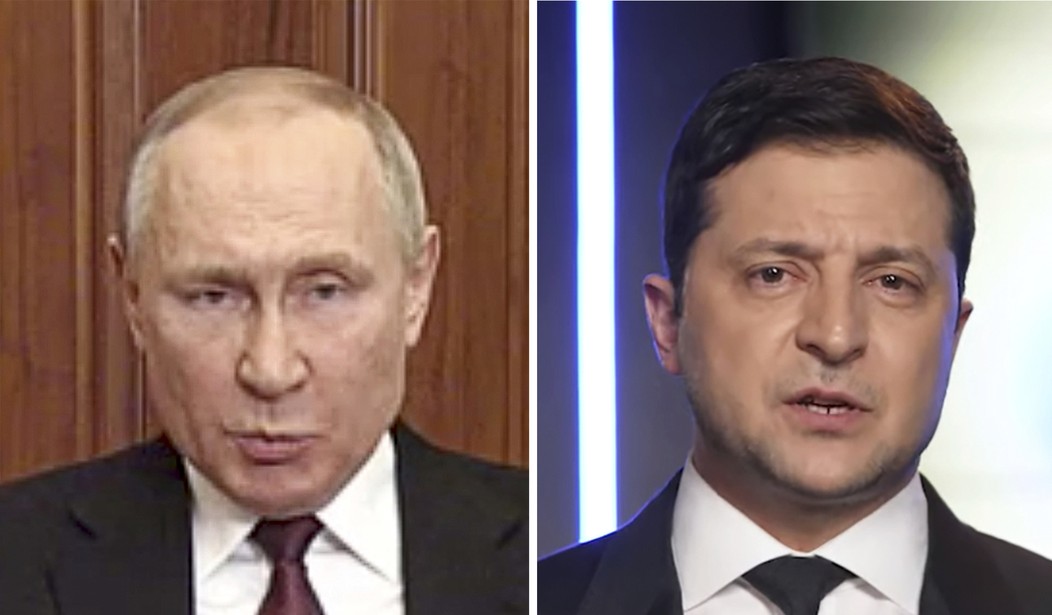We’re now into the second year of the war in Ukraine, and while support for Ukraine remains strong (if not support for endless military aid to them) we’re reaching the point where virtually everyone wants to see an end to the fighting. Or at least that’s what most of them say in public. The Wall Street Journal has reached the conclusion that Ukraine’s allies see a way that the war could be brought to an end. Or multiple ways. But the problem as they describe it, however, is that nobody has a specific plan to make it happen. Much hope rests on an expected Ukrainian counteroffensive in the spring, but even with all of the increasingly powerful military arms and equipment Zelensky continues to receive, few believe that he will be able to deliver enough of a punch to finish the job. (Subscription required)
Western leaders are beginning to have a clearer vision of how they hope the war in Ukraine will end. What is missing is any plan to make it happen.
The hope in Washington and European capitals is that a Ukrainian counteroffensive—boosted by Western tanks and other fresh weaponry—will punch a hole in Russia’s control of Ukrainian territory this spring.
In theory, that gives Kyiv’s forces such a battlefield advantage that Russian President Vladimir Putin is nudged into peace talks where the Kremlin cedes at least the territory it has taken since the invasion in February 2022. Then Ukraine is free to anchor its future in the west, and a defeated and diminished Mr. Putin can face the wrath of his own people.
The scenario described above relies on a number of assumptions and is lacking in key specifics. It assumes a Ukrainian spring counteroffensive of ferocious proportions that “punches a hole” in the Russian lines at the eastern end of the country. But the Ukrainians have already punched several holes into Russian-held territory. That hasn’t seemed to deter Vladimir Putin at all and he continues to send conscripts into the fray while blasting the countryside with rockets.
Mention is made of “western tanks and other fresh weaponry.” That would certainly add some punch to Ukraine’s capabilities, but the delivery of any significant number of tanks still appears to be well in the future, possibly not until next year. And almost certainly not quickly enough for a spring offensive. And Vladimir Putin has shown no signs of suggesting a ceasefire where he gives back even the new land Russia has conquered over the past year.
Perhaps that is why the WSJ analysis suggests that the far more likely path will involve “a war of attrition that lasts until one side is so defeated or exhausted that it calls a halt without realizing its ultimate aims.” This is clearly a reference to Ukraine since there is no scenario where the Russian Federation is “defeated” unless Ukraine plans on invading Russian territory, likely triggering the use of tactical nuclear weapons. And what are Ukraine’s “ultimate aims” in this scenario? Ejecting the Russian forces from all of its territories, of course. Or at least all of the territory it controlled prior to the invasion.
It’s also worth noting that the WSJ points out that the “war of attrition” scenario would almost certainly be measured in years, not weeks or months. How long will the patience (not to mention the pocketbooks) of Ukraine’s allies last? Yes, Joe Biden and most of the swamp dwellers in Washington continue to say “as long as it takes.” But what if it takes years?
The WSJ then raises the prickly question of what should be done about Putin even if the war does shut down in some fashion.
There is broad agreement that Ukraine ought to be given the means to deter a future Russian invasion, either as part of NATO or in some kind of pact with the alliance.
But French President Emmanuel Macron and some allies have said they are wary of humiliating Russia and want the West to offer Ukraine security assurances that Russia can live with. Others instead want to see Russia’s military permanently degraded.
It’s a rare day when you’ll hear me say this, but Macron is probably making a valid point. If Putin is “humiliated” too much on the world stage, he will become increasingly likely to do something erratic. And as far as making Ukraine part of NATO to deter future attacks goes, has everyone forgotten that talk of Ukraine potentially joining NATO was one of Putin’s key complaints in the first place?
Everyone quoted in the article seems to agree that Putin believes that time is on his side. The Prime Minister of Poland notes that the United States (at least as long as Joe Biden is in charge) will refuse to allow Ukraine to fall. But he continues by saying that he is more worried about his Western European partners and friends “because they are less patient.” When he says something like that, we should probably pay attention.
I’ve tried to game this situation out in my head more times than I can count. And it’s becoming increasingly clear (at least to me) that there’s one reason that nobody is proposing a comprehensive solution that ends this war with Ukraine achieving “victory.” It’s because no such solution exists. And if that’s the case, a more realistic plan will be required and that may mean that Russia doesn’t walk away empty-handed.








Join the conversation as a VIP Member